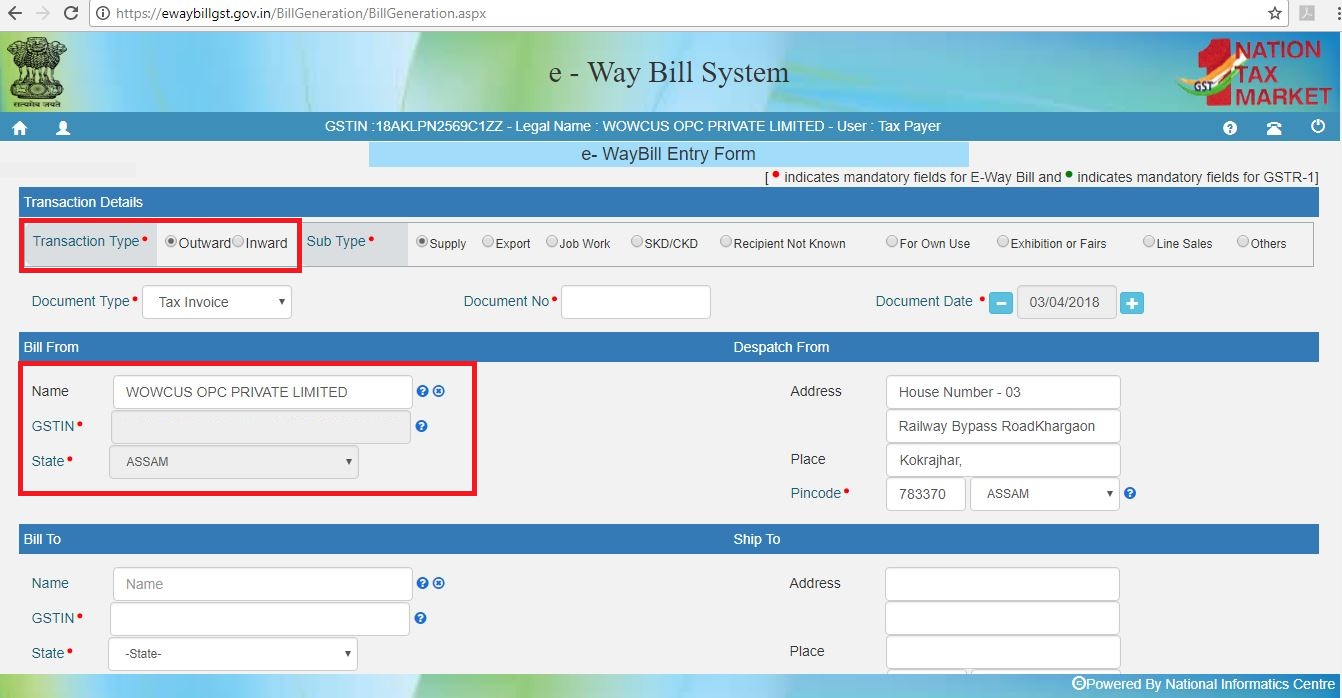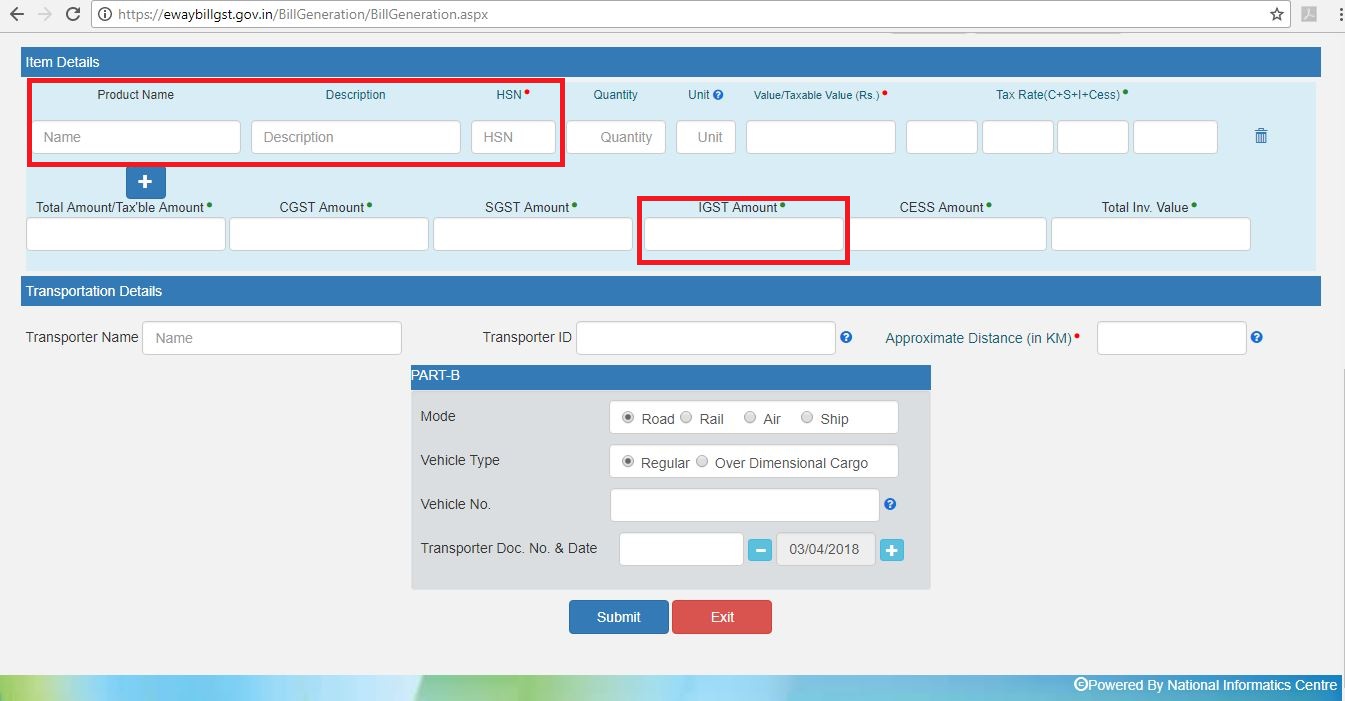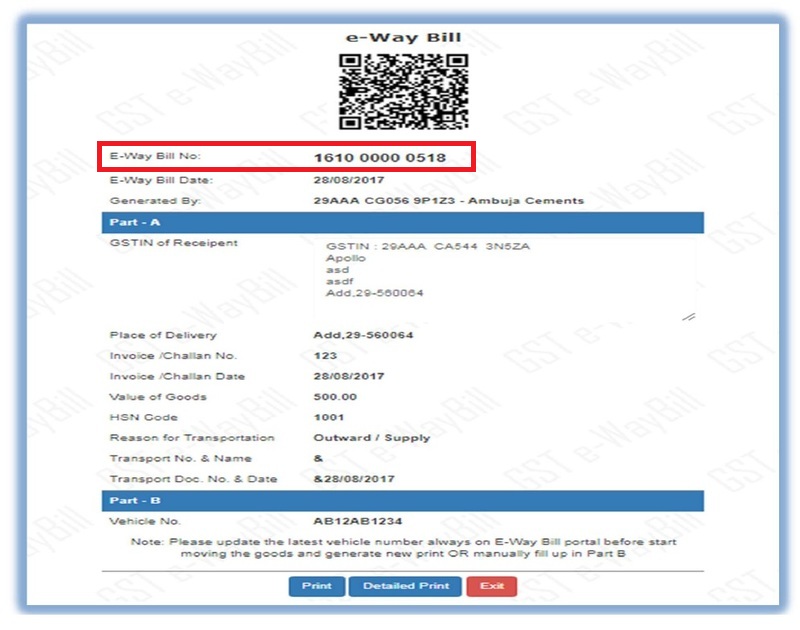Regarding eway bill
shraddha atal (article) (33 Points)
19 June 2018in that case do we need to generate eway bill or not?
if yes than how
shraddha atal (article) (33 Points)
19 June 2018
An eway Bill is an ‘electronic way’ bill for movement of goods which can be generated on the eWay Bill Portal. Transport of goods of more than Rs. 50,000 (Single Invoice/bill/delivery challan) in value in a vehicle cannot be made by a registered person without an eWay bill from 1st April 2018. E-way bill can be generated or cancelled through the e-way bill website, LEDGERS GST Software, SMS, Android App and by Site-to-Site Integration (through API). When an eWay bill is generated a unique eWay bill number (EBN) is allocated and is available to the supplier, recipient, and the transporter. In this article, we look at the steps to generate a e-way bill on the Government website.
E-way bill can be generated on the GST eWay Portal. To use the portal, you will need a GST registration and transporter registration.
Step 1: Access the eway bill generation portal at https://ewaybill.nic.in/ and enter the login detail to enter the platform.

Step 2: Click on the “Generate New” option from the eWay bill- Main menu page to generate a new eWay bill.

Step 3: A new eway bill generation form appears. Fill in the details required similar to creating a GST invoice.
Select outward, if you are the supplier and inward, if you are the recipient. Enter details of the supplier and recipient along with GSTIN, wherever applicable.
When a registered GSTIN is entered in the field provided in the form, other details gets pulled into the empty fields. Before proceeding to the next step kindly check the details.

STEP 4: The second half of the page will contain information to be filled as follows:

Step 5: Generate E-way bill
Click on the “SUBMIT” button to generate the eWay Bill. The eWay bill gets displayed which contains the eWay Bill number and the QR Code that contains all the details in the digital format. The printed copy of the bill should be provided to the transporter who will carry it throughout the trip till it is being handed over to the consignee.

Step 6: Consolidate E-way Bill Generation
A consolidated eWay bill can also be created which contains all the details on the transaction and is also easy to generate it by providing just the ‘eWay bill number’ in the required field. Click on “SUBMIT” to generate the consolidated eWay Bill.

An eWay bill can be updated once it is created. Details on the transporter, consignment, consigner and also the GSTIN of both the parties can be updated in the existing eWay bill provided the bill is not due on its validity.
Ravi SADhiyan
(Practice)
(4510 Points)
Replied 19 June 2018
| Originally posted by : shraddha atal | ||
 |
if we want to transfer goods from baroda to surat and party is registered in indore mp . in that case do we need to generate eway bill or not?if yes than how |  |
Sometimes, the tax payer raises the bill to somebody and sends the consignment to somebody else as per the business requirements. There is a provision in the e-way bill system to handle this situation, called as ‘Bill to’ and ‘Ship to’.
In the e-way bill form, there are two portions under ‘TO’ section. In the left hand side - ‘Billing To’ GSTIN and trade name is entered and in the right hand side - ‘Ship to’ address of the destination of the movement is entered. The other details are entered as per the invoice.
In case ship to state is different from Bill to State, the tax components are entered as per the billing state party. That is, if the Bill to location is inter-state for the supplier, IGST is entered and if the Bill to Party location is intra-state for the supplier, the SGST and CGST are entered irrespective of movement of goods whether movement happened within state or outside the state
MURALI NADIMINTI
(502 Points)
Replied 19 June 2018
Vinod Babu
(24196 Points)
Replied 19 June 2018
CA S Praveen Kumar Reddy
(Chartered Accountant)
(2195 Points)
Replied 19 June 2018



Certification Course on GSTR-3B Reconciliation with GSTR-2B through Chat GPT
